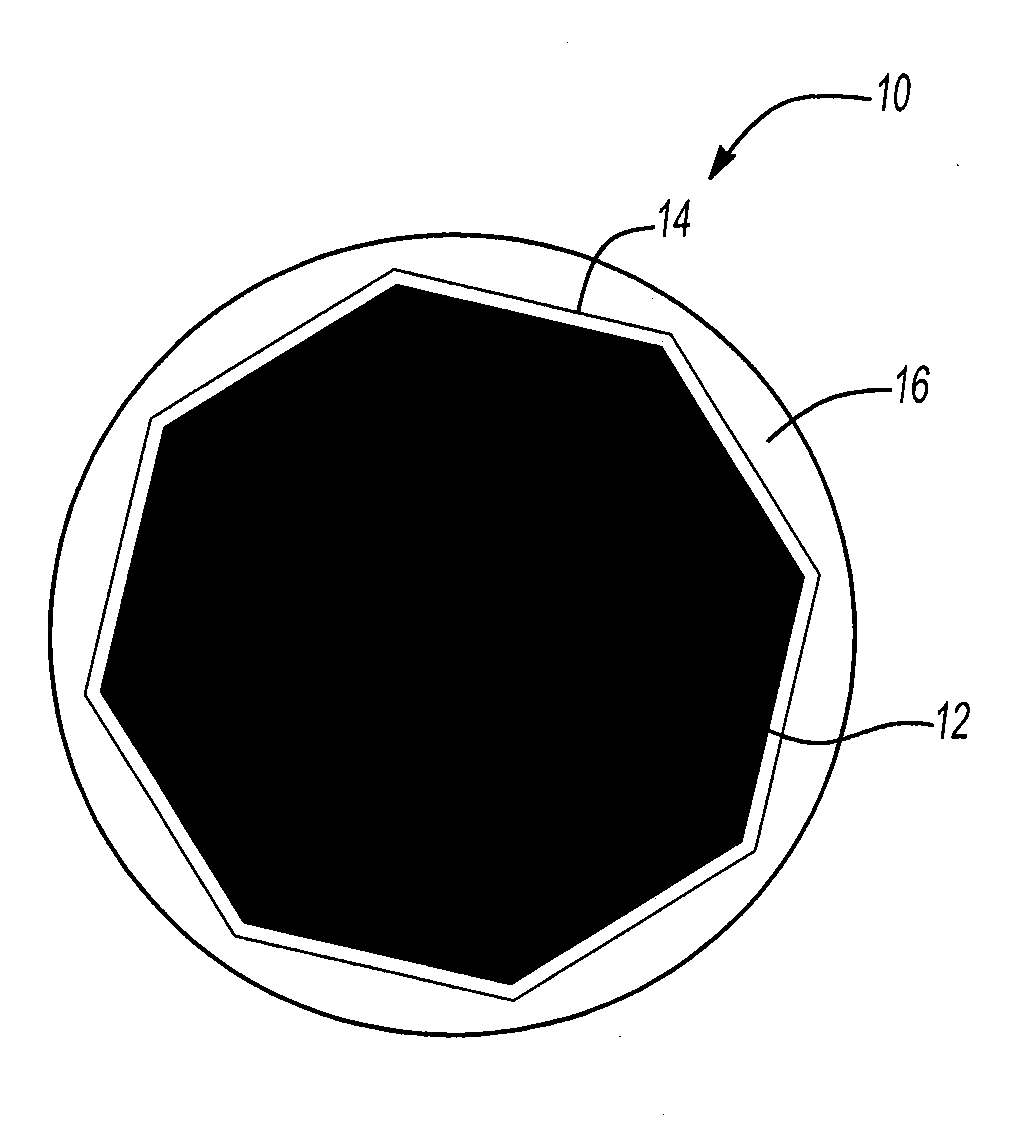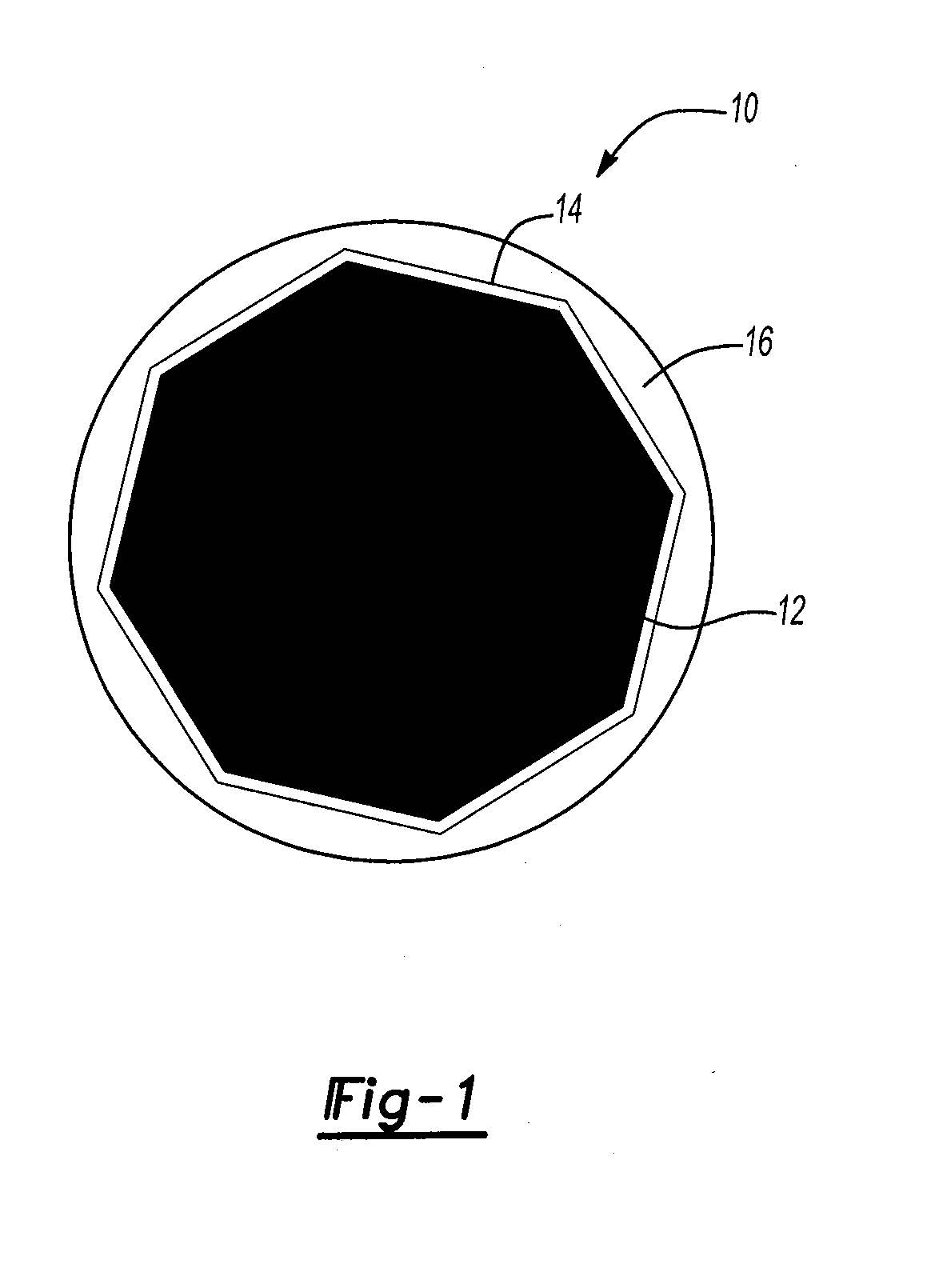Fruit Snack with Probiotics and Method of Manufacturing a Fruit Snack with Probiotics
a fruit snack and probiotic technology, applied in the field of fruit snack with probiotics, can solve the problems of reducing the shelf life and viable probiotic bacterial count of fermented products, negatively affecting the beneficial role of the fruit snack, and requiring refrigeration
- Summary
- Abstract
- Description
- Claims
- Application Information
AI Technical Summary
Benefits of technology
Problems solved by technology
Method used
Image
Examples
example 1
[0049]
INGREDIENTPERCENTAGECorn syrup20.50Fruit Juice45.00Strawberry Puree10.00Cornstarch6.67Sugar16.65Citric acid0.74Flavor0.13Color0.01Vitamins A, C and E mix0.2Probiotic culture powder0.1(L. acidophilus, L. Casei)(50 billion cells / g)
[0050]A uniform slurry of the ingredients set forth in the table of Example 1 above was made in a kettle provided with a suitable agitator. The slurry was cooked to a temperature of 240° F. until the moisture amount was reduced to 22 percent. The cooked slurry was transferred to a starch molding machine and deposited in cavities of about 2 cc volume. After the product cooled to room temperature, it was tested for flavor quality and viable probiotic bacteria. The product was discarded because it did not contain any viable probiotic bacteria and lacked flavor. Most of the vitamins also were destroyed.
example 2
[0051]
INGREDIENTPERCENTAGECorn syrup20.50Fruit Juice45.00Strawberry Puree10.00Cornstarch6.67Sugar16.65Citric acid0.74Flavor0.13Color0.01Vitamins A, C and E mix0.2Probiotic culture powder0.1(L. acidophilus, L. Casei)(50 billion cells / g)
[0052]A slurry of the ingredients set forth in the table of Example 2 above, but excluding vitamin mix, acid, flavor and probiotic culture powder, was made and processed in the manner described in Example 1. After a moisture level of 22% was reached, remaining ingredients were added and the batch was process as described in Example 1. After the product cooled to room temperature, it was assayed for vitamin content, and viability of probiotic bacteria. No viable probiotic bacteria was detected in the product, and between 7 to 16 percent of the vitamins were also destroyed. Flavor of the product was judged inadequate. The batch was discarded.
example 3
[0053]
INGREDIENTPERCENTAGECorn syrup33.00Fruit Juice Conc.8.00Strawberry Puree3.50Cornstarch8.50Sugar29.00Water16.82Citric acid0.74Vitamin A, C and E mix0.20Flavor0.13Color0.01Probiotic culture powder0.1(L. acidophilus, L. Casei)(50 billion cells / g)
[0054]A uniform slurry of the ingredients set forth in the table of Example 3 above, with the exception of vitamin mix, acid, flavor and probiotic culture powder, was made in a kettle provided with a suitable agitator. The slurry was cooked in a continuous cooker at a temperature of 245° F. The cooked candy mass was transferred from the continuous cooker to a vacuum chamber to reduce the residual moisture to 22% and to cool the product to 190° F. Vitamin mix, acid, flavor and probiotic culture powder were added to the cooked mass and deposited in starch molds as in Example 1. After overnight curing at 60° F., the product was removed from the starch mold-boards and assayed for vitamin content and viability of probiotic bacteria. It was det...
PUM
 Login to View More
Login to View More Abstract
Description
Claims
Application Information
 Login to View More
Login to View More - R&D
- Intellectual Property
- Life Sciences
- Materials
- Tech Scout
- Unparalleled Data Quality
- Higher Quality Content
- 60% Fewer Hallucinations
Browse by: Latest US Patents, China's latest patents, Technical Efficacy Thesaurus, Application Domain, Technology Topic, Popular Technical Reports.
© 2025 PatSnap. All rights reserved.Legal|Privacy policy|Modern Slavery Act Transparency Statement|Sitemap|About US| Contact US: help@patsnap.com


